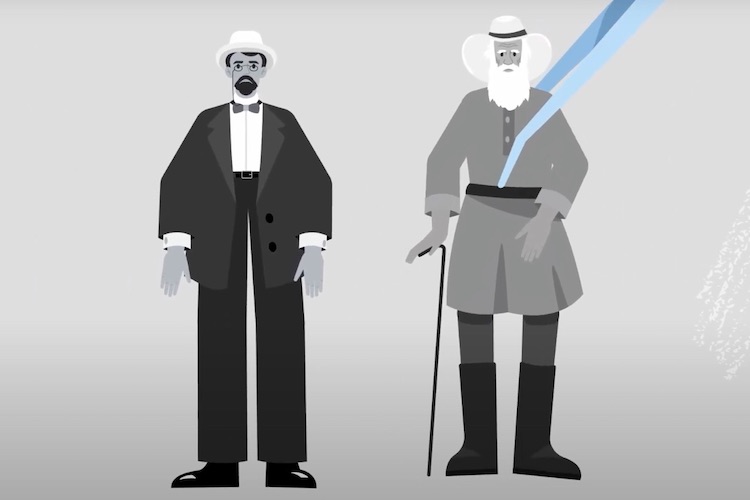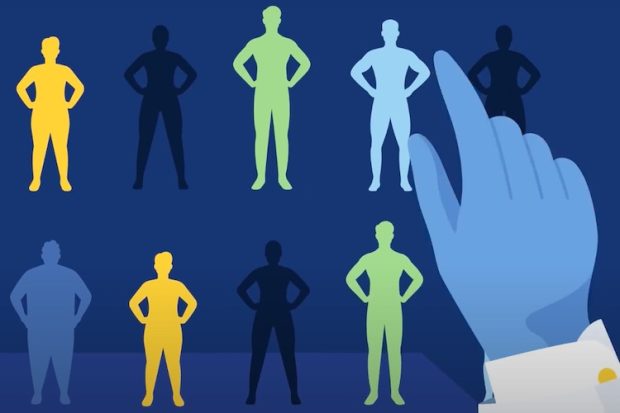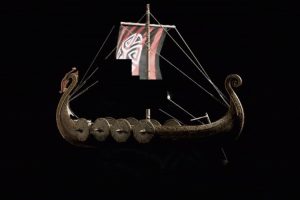Vikings: Raiding and Trading in the Middle Ages
Professor of German Studies Rudolf Simek on the Vikings' nomadic life, their cultural achievements, and the en...

In October Current Biology published an article called ‘The Role of Recent Admixture in Forming the Contemporary West Eurasian Genomic Landscape’. We asked one of the authors, Dr George Busby from Wellcome Trust Centre for Human Genetics, to comment on this study.
How do the people that we read about in history books relate to the nations of 21st century Europe? Our DNA contains a record of ancestral connections and so we sought to answer this question by using genetics to explore human history. We compared the genomes of 1000 European and West Asian people – West Eurasians – with a further 1000 people from across the rest of the world. Because the DNA of West Eurasians is very similar, we had to use new statistical techniques that are able to tease apart the subtle, but real, genetic differences between people. We all inherit DNA as chromosomes from our parents, who themselves received DNA from their parents. As we go further back in time these stretches of DNA are broken up by recombination. Our techniques model this process allowing us to use information about shared stretches of DNA between different groups of people to refine our models of human ancestral history.

Our analysis allowed us to piece together the genetic history of when populations came together, a process called admixture. We were able to identify both the the groups that came together and, significantly, the timing of this admixture. For example, we found evidence for sub-Saharan African admixture across the Spanish and Italian Mediterranean, the time of which aligns with the Islamic occupation of this region between 750-1200CE. Across Turkish and Caucasus populations, we saw defined admixture events involving Mongolian groups during the period of 1200-1300CE, which perfectly agrees with the known Mongol invasions of Genghis Khan in this region. We identified an outgroup of two Romanian individuals who looked genetically different from the other Romanians in our study. Intriguingly, when we ran our admixture analysis on these individuals, we saw clear evidence of an Indian admixture event at around 1000CE, allowing us to hypothesise that these two individuals were Romany gypsies, who are known to have left the sub-continent at around this time.
We identified further admixture involving groups within West Eurasia. These events often involved closely related groups, but the timing of these events aligned with the Medieval Period, and in particular a time known at the Völkwanderung, when different so-called barbarian groups, such as the Huns, Vandals, Goths, and Saxons are known to have moved around Europe. In general, we believe our results are important for three main reasons. First, we identified admixture in all parts of West Eurasia, suggesting that population movements and migration have been the norm, rather than the exception over recent history. Secondly, these movements involved both groups coming into West Eurasia from outside, as well as previously under-appreciated large-scale movements of people within Europe. And finally, the European continent is extremely well studied from an historical point of view. That so many of our inferred signals align with known historical events, suggests that our methods have power to uncover new insights into the history of parts of the world where the historical record is less well known.
The fundamental premise of our study is the idea that the all share DNA with each other, but we share more DNA with particular people because of historical movements and interactions. Our DNA is packaged up in chromosomes, of which we have 23 pairs, one of each pair comes from our mother and the other from our father. When we ourselves produce eggs or sperm (collectively called gametes) in a process called meiosis, we can only pass on one of each pair of chromosomes. We don’t, however, pass on only those chromosomes from our mother to one gamete, and those of our father to another. The chromosomes are mixed up. Additionally, during meiosis the chromosome pairs line up and swap sections of DNA in a process called recombination. This not only means that your gametes will have a mixture of your parents’ chromosomes, but also that some of those chromosomes will themselves be mixtures, or mosaics, of your parental chromosomes. This concept is key to our admixture methodology because when you view people’s chromosomes as mosaic chunks of ancestry you have greater power to see the historical connections between groups. For example, if one of your parents is African and the other European, your gametes will not only have a mixture of African and European chromosomes (which are sufficiently different to be able to tell apart quite easily) but each of these chromosomes may be split into sections of African and European ancestry as well.
We look at the changing ancestry along chromosomes among all individuals in a population, to understand the ancestral history of groups. For example, if a population has, on average, long sections of African ancestry interspersed with mostly European chunks, this suggests that there was an admixture event in the ancestors of this population between a mostly European group and an African group. Because the African ancestry chunks are long, recombination will not have had a lot of time to break them up, so it’s likely that this admixture happened recently. Alternatively, lots of short chunks of ancestry implies that the admixture happened a long time ago.
As mentioned, we believe that by showing that this method works reasonably well for a part of the world where the historical record is well known, there is now the opportunity to use it a part of the world where history is less well recorded. A clear case of where this might work well is in Africa, for example. We are also thinking about what the functional and adaptive consequences of this admixture is. For example, in groups where we observe Mongolian admixture, does this Mongolian ancestry tend to occur across the same genes in people from the same population? If so, then there may well be something beneficial about the Mongolian version of these genes, which tells us something about the potential mechanisms of adaptation in human history.

Professor of German Studies Rudolf Simek on the Vikings' nomadic life, their cultural achievements, and the en...

Scientists have found structures in parrot brain responsible for sound imitation

Neuroscientist Emery Brown on the anesthetic state, the arousal network, and medical coma